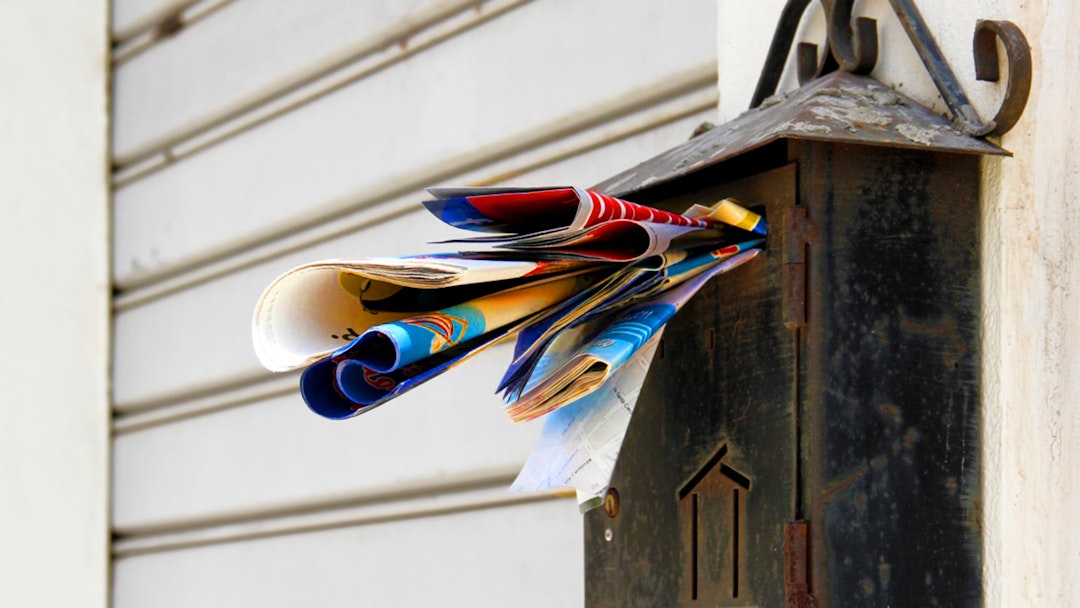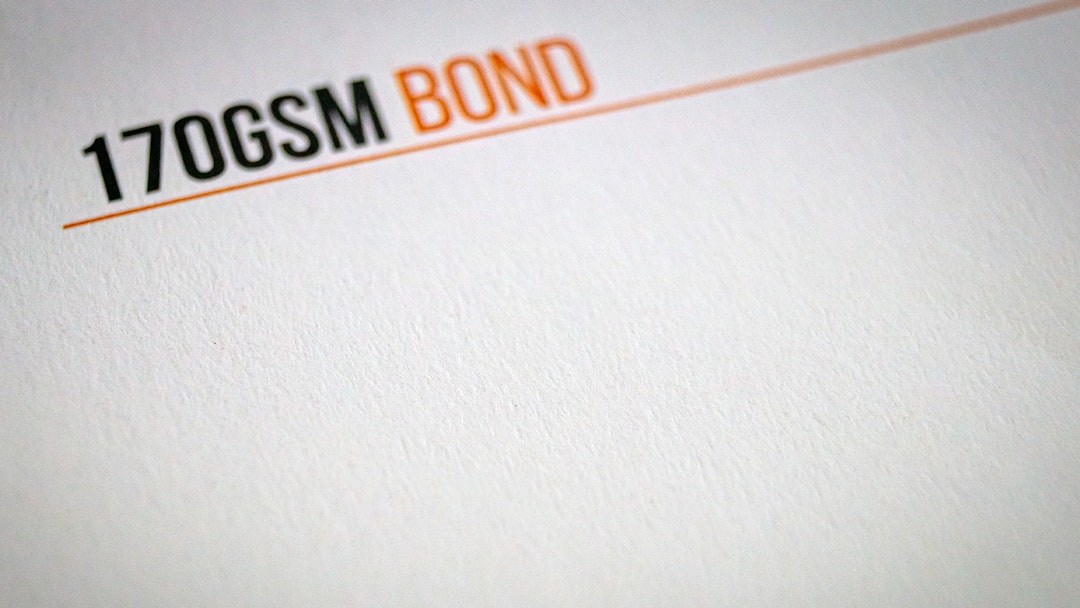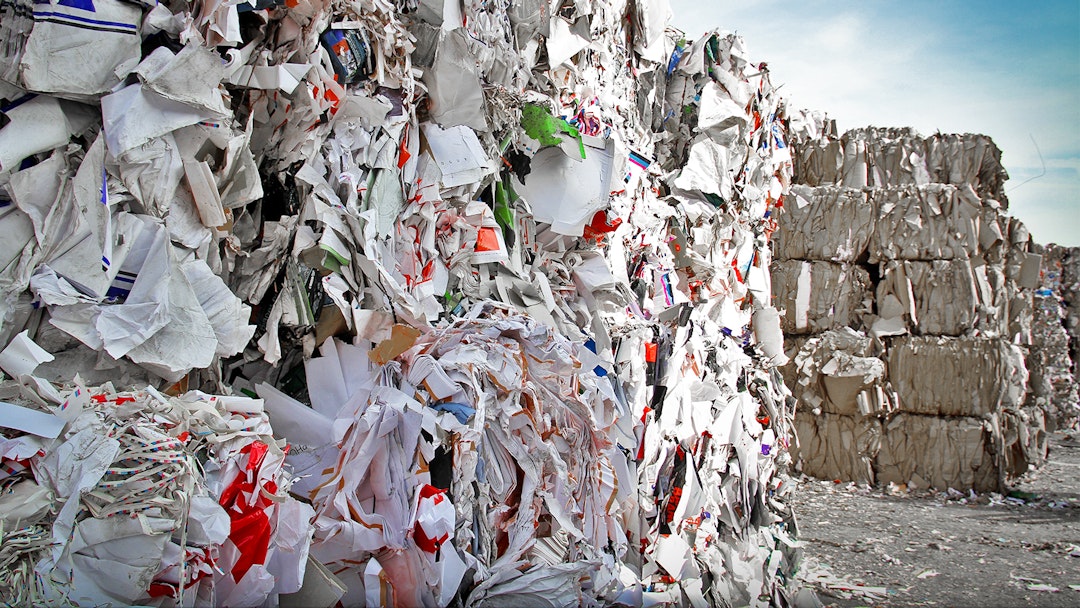Recycled paper usually costs more than new paper, and seems like an inferior product. But you don’t have to choose it just because it saves the planet. You can choose it because it gets great results.
Recycled paper isn’t perfectly white, and it has imperfections the keen eye can spot. With finishing options typically limited to none, colours can appear flatter and the item can wear more easily. What’s not to like?
Looking natural, not promotional
Everyone’s drowning in marketing material, so everyone knows how it looks: bright and glossy. Not flat and matte.
Saturated, shining colours are more likely to catch the eye. But we don’t just want to catch (and maybe hurt) our customers’ eyes. We want them to engage with what we have to say, enjoy hearing it, believe in what we’re offering, and ultimately join our tribe (for just 1,200 easy monthly payments).
The problem is, the louder your marketing, the faster your customers’ brains spot a hard sell. It’s the paradox of ‘banner blindness’: things that look ‘promotional’ are subconsciously discredited to the point of invisibility; glanced at and immediately forgotten. Even the most explosive web ads can expect no more than 5 clicks in every 10,000 views.

Recycled paper doesn’t look like typical marketing, which is exactly what we can use to our advantage.
It isn’t quite as outrageously vibrant — so it can sneak under the marketing-alert radar. It doesn’t fight for your attention; it invites it. Your investment in its design and wording starts paying dividends. It’s a pleasure to read, and — because it’s usually uncoated — also a pleasure to handle, with a subtle tactility like the wood it’s made of. It’s actually a premium experience.

Of course, printing companies wouldn’t call an uncoated paper ‘premium’. They want to sell you the special paper with the special lamination and the UV light treatment. And there’s no doubt that judicious use of fancy finishes can look and feel fantastic. But the industry secret is: so does plain old recycled.
What about the cost?
Is the subtler look and feel of recycled paper worth the additional cost over a non-recycled equivalent?
The fact is you could get the same benefits of avoiding the ‘glossy’ look by printing on uncoated, but new, paper. It would look and feel very similar to recycled, but cost less. As much as £5.50 less.
Printing is incredibly cheap. You could print a leaflet for every single person in Cambridge, on nice paper, for 0.008p each. For a more typical run of say 1,000 items, the difference in price between recycled and non-recycled could hit your budget by as much as the cost of a sandwich. (OK, in Cambridge, half a sandwich.)
The unbearable cheapness of printing is, of course, the reason we are all drowning in bumf. It’s also the reason why materials are nearly always significantly over-ordered. Millions of pages every year pass from tree to bin without ever leaving the box. The slight cost premium of recycled paper is a psychological trick we could all stand to play on ourselves, reminding us we only need as many as we need. There’s that £5.50 back.

In the end, the success of your printed item is relatively unrelated to how many you order, within a wide margin of error. It depends much more on how well it’s been designed, and how well you target it. £50 of printing is £50 of waste if you’re printing pap; and 50 items in the right places are worth more than 5,000 being trodden into the carpet of an exhibition hall (each bearing your logo).
P.S., save the planet
As it happens, printing on recycled paper is also environmentally beneficial — and that’s good for your brand too.
Being part of the solution (to a problem which 85% in the UK are concerned about, according to Ipsos MORI)1 will fly better with employees, suppliers, customers, and that little voice in the back of your head.
Recycled paper really is environmentally better. It uses less energy and water, and generates less waste and emissions, according to the most comprehensive, independent, scientific analysis of paper manufacturing ever conducted, by the EDF.2

Just a note: paper from “FSC-Managed Sustainable Forests” doesn’t count. This certification protects workers (which is good), but not the environment (to be clear). Similarly, “Elemental Chlorine-Free” printing is similar to the phrase “Madagascan Vanilla”. (90% of all the vanilla on Earth comes from Madagascar, and it doesn’t make a big difference anyway.)
So, should you print recycled?
Sometimes you do need brilliant white, or corporate sheen, or protective lamination — which may be unavailable with recycled options.
You’ve got to decide what’s right for every specific case. But for the vast majority of client projects, recycled is our top recommendation. The natural look and feel of recycled paper is a subtle, happily virtuous, yet inexpensive way to set materials apart.
-
Concern About Climate Change Reaches Record Levels, Ipsos MORI, 12 August 2019 ↩
-
Paper Task Force Report, EDF, 1995. ↩
What are your experiences (or not) of printing on recycled paper? Will you consider it now for your next campaign – or why not? We posted this article on the networks below, where we’d love to hear your response.
While you're there, drop a Like or Share if this was useful so we know to write more like it in future.

 LinkedIn
LinkedIn
 Facebook
Facebook
 Twitter
Twitter
 Medium
Medium